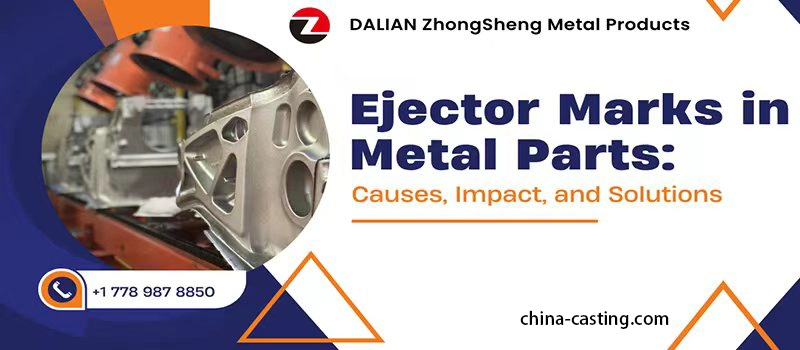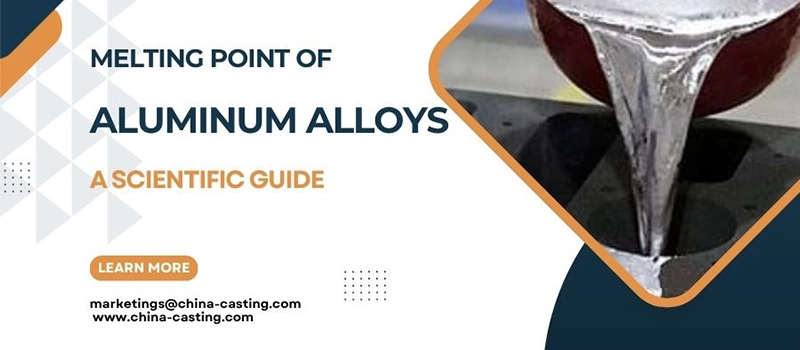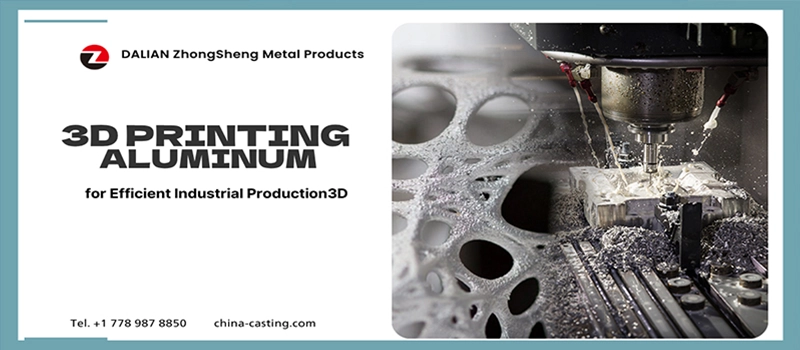Are you facing quality issues in your cast or machined parts? Do inspections often reveal inconsistent metal composition? Are delays caused by rework or rejected shipments starting to affect your delivery schedule? These are common problems for many manufacturers and buyers in the metal fabrication industry.
Spectrometers provide a direct solution. They offer fast, accurate chemical analysis of metal materials—right on the production floor. By identifying each element in the metal with precision, spectrometers help ensure product quality, regulatory compliance, and consistent batch performance.
Today, spectrometers are no longer optional tools. They are becoming standard equipment in casting shops, machining workshops, and quality inspection departments.
What Is a Spectrometer? A Beginner’s Guide
A spectrometer is a testing device that checks the chemical composition of metal. It tells us exactly what elements are inside a metal sample—like iron, carbon, chromium, or manganese—and how much of each is present.
Need Help? We’re Here for You!
In metal fabrication, this is critical. Every part we produce must match exact material standards. A slight change in composition can lead to product failure, safety risks, or rejection from buyers.
The most common type we use is the optical emission spectrometer (OES). It works by applying a small spark to the metal surface. That spark causes the atoms to emit light. The spectrometer then reads this light to identify each element in the sample.
Each element gives off a different light wavelength. The machine reads those signals and displays the results as a breakdown of the metal’s contents.
Why do we use it? Because it’s fast, reliable, and accurate. Results come in seconds. That means we can test metal during every production stage—when raw materials arrive, after melting, and before shipping the final part.
Spectrometers are now standard equipment in foundries, machining lines, and forging workshops. They help reduce defects, save time, and build trust with customers.
In simple terms, a spectrometer is our guarantee that the metal we use is exactly what it should be.
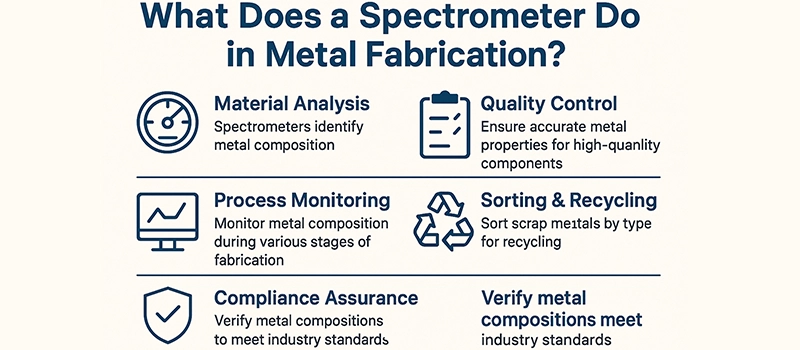
How Spectrometers Work in Metal Fabrication
Spectrometers test metals by analyzing the light they emit during excitation. Each element in a metal gives off a unique light wavelength when energized. The spectrometer captures this light and calculates the material composition.
The basic testing process
- A small spark is applied to the metal surface
- The atoms in the metal become excited and emit light
- The spectrometer reads this light using sensors
- A digital readout shows the percentage of each element
This entire process takes only a few seconds. It does not damage the metal part and can be performed repeatedly during production.
Real-world usage in metal production
In casting or forging lines, spectrometers are used to confirm alloy content before pouring. If the mix is off-spec, the melt can be corrected before it’s too late. In machining, material checks prevent errors caused by using incorrect metal grades.
We use spectrometers in three key stages:
- When raw materials arrive
- During in-process checks
- After final product finishing
This allows us to detect problems early and maintain consistent output across every batch.
Element detection accuracy
Spectrometers can detect dozens of elements, including iron, aluminum, copper, carbon, nickel, silicon, and sulfur. This is essential for meeting both customer requirements and international quality standards.
The accuracy of modern spectrometers is extremely high. Results typically show element percentages to two decimal places, offering a clear chemical fingerprint of each part tested.
Why Spectrometers Are Essential in Metal Casting
In metal casting, the quality of the final product depends heavily on the exact chemical composition of the molten metal. A small deviation in one element can lead to poor strength, cracking, or even total part failure.
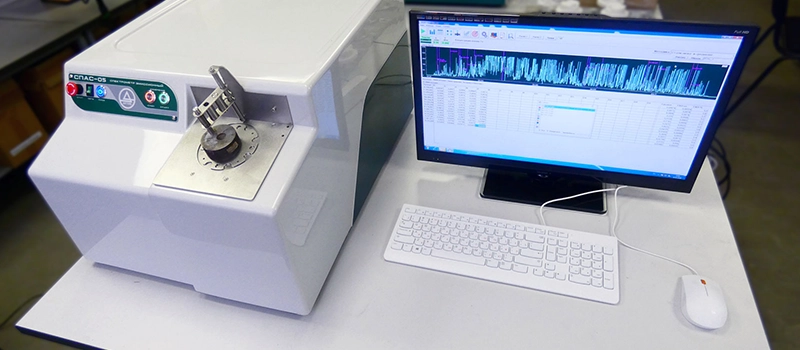
Controlling metal chemistry before casting
Before we pour molten metal into molds, we test samples using a spectrometer. This confirms whether the alloy matches the required standard. If any element is too high or too low, we can adjust the mix in the furnace before casting.
This step is especially important for complex alloys like ductile iron, stainless steel, or high-chromium castings. Missing or excess elements can cause structural weaknesses, porosity, or corrosion problems.
Ensuring consistency from batch to batch
Casting often involves large production runs. Without proper testing, one bad batch can affect hundreds of parts. Spectrometer checks help us maintain consistent chemical quality throughout the entire shift.
We test samples from different ladles and melts to ensure all materials meet the same specification. This reduces variation and supports long-term product reliability.
Meeting mechanical and performance standards
The mechanical properties of metal—such as tensile strength, hardness, and wear resistance—depend on the chemical balance. Spectrometer testing helps ensure that the casting will perform correctly in its final application.
This is critical for parts used in heavy-duty equipment, automotive systems, and industrial machinery, where material failure is not acceptable.
Spectrometer vs. Traditional Testing Methods
In the past, many metal manufacturers relied on chemical spot tests or external lab analysis to confirm material composition. While these methods provided basic results, they were slower, less precise, and often reactive instead of preventive.
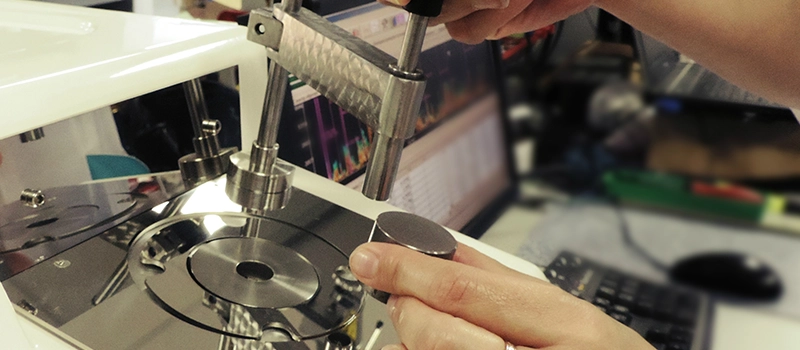
Limitations of older testing methods
Traditional methods required manual sampling and chemical reagents. They were time-consuming, involved safety risks, and didn’t always deliver real-time data. More importantly, they often caught problems after the metal had already been processed.
Sending samples to an outside lab could take hours or days. This slowed down production and made it difficult to respond to material errors before they caused defects.
Advantages of using spectrometers
Spectrometers offer fast, in-house results. With a spark and a sensor, the full element breakdown appears on-screen in seconds. This allows real-time decisions on metal adjustments, preventing waste and delays.
Because the testing is non-destructive, the same part can be tested multiple times during different stages of production. This helps track quality, not just inspect it after the fact.
Spectrometers also provide a permanent record. Each test result can be saved, printed, and added to batch documentation. This is useful for traceability, audits, and customer reporting.
Impact on cost and efficiency
The biggest gain is time. Instead of waiting for lab reports, operators can take immediate action. That means fewer rejected parts, faster delivery times, and lower production costs.
Compared to older methods, spectrometers deliver both speed and accuracy, making them a valuable investment for any modern metal fabrication business.
How Spectrometers Improve Quality Control
Quality control in metal fabrication depends on accurate, repeatable data. A spectrometer gives you that data in real time. It doesn’t just check the metal—it helps manage the entire production process.
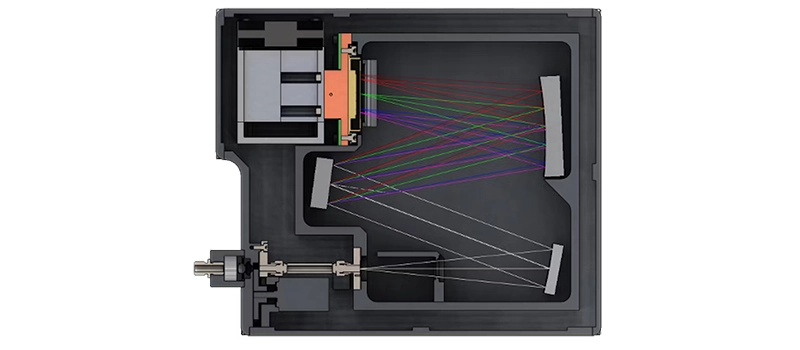
Inline testing during production
Spectrometers allow operators to test metal before, during, and after each key stage. For example, in a casting process, we can test raw material, molten metal, and the finished part. This provides full control over the chemical consistency of every batch.
By testing during production, errors can be caught early. If an element is out of range, adjustments can be made before the material is poured or machined. This prevents downstream problems.
Fewer defects, fewer returns
Incorrect composition leads to poor machining, cracking, or mechanical failure. These problems often show up after shipment, leading to customer complaints and return costs.
Spectrometers reduce this risk. By catching issues before products leave the factory, we save time, protect our reputation, and deliver better results to our customers.
Better documentation and traceability
Each spectrometer test can be logged and saved with batch data. This creates a traceable record for quality inspections, audits, and certifications.
If there’s ever a question about the material used in a product, we can pull the test data immediately. This adds transparency and builds trust with buyers.
Case Study: Spectrometer Use in Our Daily Production
In our casting workshop, spectrometers are part of the daily process. We use them from the moment raw material enters the facility to the final inspection before shipment.

Step-by-step integration in casting production
When metal arrives, we take a sample and test it with the spectrometer. This confirms the supplier’s composition matches our technical requirements. If it doesn’t, we reject the batch before it enters production.
Before casting, we take a molten metal sample and perform another spectrometer test. If the alloy is off-spec, adjustments are made in the furnace—adding or removing certain elements. This step is essential for products that require exact mechanical properties, like wear-resistant or high-strength parts.
After the parts are cast and cleaned, we perform a final spectrometer check. This ensures no contamination occurred during melting or pouring.
Real response to off-spec results
In one case, we found chromium levels slightly below target in a stainless steel batch. Without a spectrometer, this could have gone unnoticed and led to corrosion failure in the field.
Instead, we corrected the alloy before pouring. The result was a batch of castings that passed both internal inspection and third-party certification without delay.
Transparent records and client confidence
Every spectrometer test we run is stored by part number and batch ID. This data is available during audits and can be shared with customers when needed.
This level of quality control supports compliance with CE and ISO standards, improves internal accountability, and helps reduce rework, returns, and delays.
Need Help? We’re Here for You!
Conclusion
Spectrometers are essential tools in modern metal fabrication. They provide fast, reliable chemical analysis that improves quality, reduces risk, and supports every stage of production. With accurate data and real-time control, we can deliver consistent, compliant metal parts that meet global standards.


